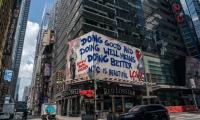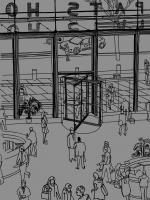New York City
Articles tagged with New York City
Tag Archive
- 2022
- 25 april
- African Contemporary Art
- Afrique
- Akwaaba Music
- anti-colonial struggle
- Architecture Biennial
- Archives
- atafona
- Atlas da Solidão
- Barthélémy Toguo
- biography
- blackness
- Britain
- buenos aires
- Cabo Verde
- Carola Saavedra
- Celeiro
- chronicle
- circulação de saberes
- colonialism
- contemporary photography
- Cova da Moura
- Cuca
- culturas afrobrasileiras
- Danijoy Pontes
- decolonisation
- Délio Jasse
- Dombe Grande
- eduardo mondlane
- Euclídes da Cunha
- Exhibition
- exílio
- Fernando Anuang´a
- Festa do Avante
- Fiction
- FLÁVIO CARDOSO
- forgetting
- fragment
- General D
- Harare
- History
- I only rest in the storm
- Ícaro Lira
- ify obi
- impasse
- Índios
- international relations
- Jacinto Lemos
- jewish culture
- Jimmie Durham
- Joana gomes
- Joëlle Sambi
- journalism
- Kenya
- kwame brathwaite
- Licínio Azevedo
- Lisboa
- Lula
- Marianne Keating
- mental health
- Migration and Development
- Mimesis
- Moçâmedes
- Museu afro-brasileiro
- Negro. mulheres
- Neo-Animism
- New Orleans
- palestina
- Panorama
- paraíso
- patrice Lumumba
- PCP
- percepção
- performs
- periphery
- political protests
- power asymmetries
- programation
- protests
- representações
- representativity
- revista
- Samba
- SARS
- Self-ownership
- sequence
- sociolinguistic milieu
- soil
- spaces of invention
- Steve Paxton
- Suelny Rolnik
- super mama djombo
- Tarrafal
- Teatro Praga
- territory
- transatlantic slave trade
- Vital Matter
- winners
- women rights
 For 20 years, Fran Lebowitz has been dreaming of tourists disappearing from Times Square. “Now there are no tourists in Times Square,” she recently said, “but, of course, there’s no one in Times Square.” When the pandemic hit in March, Times Square went from a congested, and hellish, hub for tourists to an eerily empty dystopia. More recently, though, it has become a site of artistic expression, taken over by a free fall of protest art, colorful parades and performances. “It lacks the same history of worker organization spaces like Union Square, but with the spread of digital graphics and art during the Covid-19 pandemic and black-led uprisings, Times Square has made itself a unique site for protest in a city with more empty space, and an ongoing stream of creative mobilizations,” said Sarah J Seidman, a curator at the Museum of the City of New York.
For 20 years, Fran Lebowitz has been dreaming of tourists disappearing from Times Square. “Now there are no tourists in Times Square,” she recently said, “but, of course, there’s no one in Times Square.” When the pandemic hit in March, Times Square went from a congested, and hellish, hub for tourists to an eerily empty dystopia. More recently, though, it has become a site of artistic expression, taken over by a free fall of protest art, colorful parades and performances. “It lacks the same history of worker organization spaces like Union Square, but with the spread of digital graphics and art during the Covid-19 pandemic and black-led uprisings, Times Square has made itself a unique site for protest in a city with more empty space, and an ongoing stream of creative mobilizations,” said Sarah J Seidman, a curator at the Museum of the City of New York.  Compiled from episodes of their show, which has gained millions of listeners over the past 10 years, the book introduces us to mysteries that most of us have never considered. Why are manhole covers round? Why do the Japanese infuse them with elaborate decorations? What do painted yellow symbols on streets tell us? Why are traffic lights red on top and green on bottom? What might we notice about the designs and support systems of buildings and bridges? Why have so-called love locks or love padlocks become a problem around the world? Why are some streets straight and others curvilinear?
Compiled from episodes of their show, which has gained millions of listeners over the past 10 years, the book introduces us to mysteries that most of us have never considered. Why are manhole covers round? Why do the Japanese infuse them with elaborate decorations? What do painted yellow symbols on streets tell us? Why are traffic lights red on top and green on bottom? What might we notice about the designs and support systems of buildings and bridges? Why have so-called love locks or love padlocks become a problem around the world? Why are some streets straight and others curvilinear? 